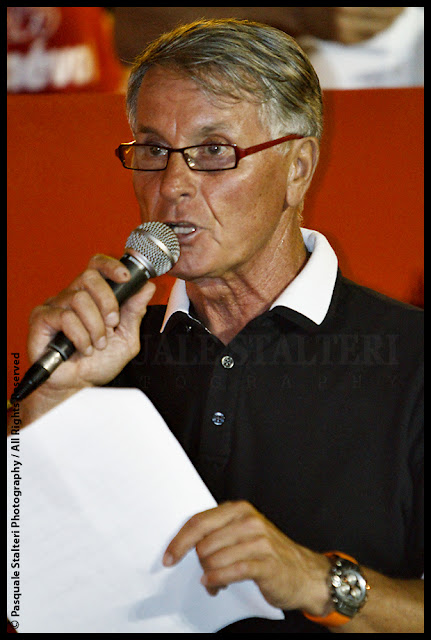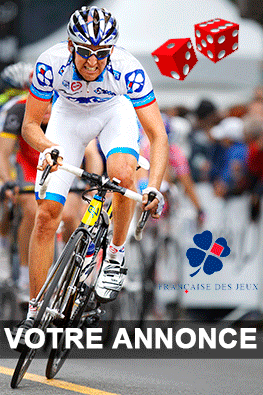 |
| Tino Rossi Photo © Pasquale Stalteri Photography / All Rights Reserved |
Les Mardis Cyclistes;
Where does the Magic Come From?
by Pasquale Stalteri & John Symon
___________________________________
“The first Mardis de Lachine happened in 1978,” recounts Mardis founder, Joseph ‘Tino’ Rossi when we met with him for lunch at his favourite restaurant on Lachine Lachine Lachine LaSalle Park
Miroir du Cyclisme (MdC) tried to find out more about that fateful day by completing Rossi’s journey; ending up at Momesso’s on Upper Lachine Rd Lachine LaSalle Park
Momesso’s version of events is that the Lachine
Rossi recounts going back to LaSalle Park Lachine
Momesso raced the Mardis cyclists in 1978 and 1979, finishing third one evening. “I positioned myself to be first, but two guys came out of nowhere and out-sprinted me to the finish,” he recounts. Already, the Mardis series were developing a following among Quebec
The winner of the 1978 Mardis season was Roger Chartrand who was also Quebec Rockies , for his version of cycling in those early days.
“Rossi was a pioneer and a visionary,” asserts Chartrand. “He made a show, drew in spectators, brought in a sound system and played disco music, had beautiful hostesses presenting the awards, spoke to the crowd, found sponsors, and made it happen,” as Chartrand puts it. While most bike events from the 1970s only lasted a few years and then disappeared, the Mardis Cyclistes series is still going strong today.”
Chartrand was perhaps more commonly known by his nickname, ‘le cascadeur’ (the stuntman) because, “Spectators were guaranteed that I would either win or crash,” as he puts it. In one legendary race, five other riders deliberately boxed Chartrand in during the final sprint. But he bunny-hopped his bike onto the sidewalk and made spectators scatter, passing the five cyclists and going on to victory. Among Chartrand’s other stunts was doing warm-up rides around the park against the direction that all other riders were going. He also recounts doing these exploits on a $100 ‘clunker’ bike.
Rossi insisted that Chartrand join the start line each week because ‘le cascadeur’ was the magnet who drew the crowds. Rossi obviously had a sense of ‘show business’ and knew what spectators wanted to see. “Back then, winning a Mardis race only brought me $25 and I won another $400 for the season,” relates Chartrand who worked winters as a ski instructor and otherwise took summers off. Apart from the financial compensation, Chartrand appreciated the notoriety that his exploits generated. “People came up to me on the street to shake hands with me. My fame also made it easy to find chicks.”
Chartrand describes cycling in the 1970s as ‘an obscure sport’ and regrets that his father never turned out to watch any of the Mardis races. Chartrand also lavishes great praise on Rossi who was able to raise the profile of cycling “almost immediately” after becoming involved.
While cycling was then an obscure sport in Canada LaSalle Park Quebec Quebec Ontario
“Bauer made us suffer when he would ride at Mardis races, coming in like a locomotive,” said Chartrand. “One time Bauer passed the pack and only about 20 other cyclists were able to finish with him. Lovell also provided fierce competition, but the Quebec
Some MdC readers might not fully appreciate who these riders were, so here are a few quick details:
· Steve Bauer (7-Eleven Cycling Team) raced the Tour de France (TdF) nine times, finishing fourth overall in 1988. Bauer also won silver at the 1984 Barcelona Olympics. He is considered Canada
· Jocelyn Lovell dominated the Canadian cycling scene in the 1960s and 70s, winning national titles, Commonwealth Games and Pan-Am Games before a tragic accident left him in a wheelchair.
· Gord Singleton became the first Canadian to win a World Championship (1982) and once simultaneously held world records in the 200 metres, 500 metres and 1000 metre events.
· Alex Stieda (7-Eleven) in 1986 became the first North American to wear the TdF’s yellow jersey; this was five years before Lance Armstrong started riding pro.
Louis Garneau and Pierre Harvey are probably better known to MdC readers and both went on to become Olympic cyclists while Harvey
Not only the names, but also the exploits from those early days remain legendary. Danny Deslongchamps, the 1980 and 1981 series winner, is probably most vividly remembered for one evening in Lachine
“The races on Tuesday nights in Lachine Edmonton Montreal Western Canada , it was a treat to take part in these crits…it gave us a way of measuring to see where our strength and skill was at any given time of the year against the Eastern boys.”
Foreign riders also come in for guest appearances and Rossi claims that an unknown Australian named Cadel Evans raced one stage in about 2001. That Australian, of course, went on to win the 2011 TdF while riding for BMC.
And in June 2009, 10,000 spectators turned out to watch Floyd Landis (riding with OUCH) finish in the middle of the pack. Landis (then with PHONAK) finished first at the 2006 TdF only to be disqualified by a positive doping test. Rossi was criticized by many for ‘inviting a convicted doper’ to the Mardis races, but points out that Landis’ infraction occurred in 2006 and he served a two-year suspension that ended in 2008. Rossi defends the Landis invite, comparing it to giving a job to an ex-convict who has served his time and repaid his debt to society.
In 2011 the New Zealand Pennsylvania Austria Lachine
In recent years, Columbian and Dutch teams have competed around LaSalle Park North America that comes close to such international prominence?
All top male Quebec LaSalle Park Quebec
Others, like current Mardis champion, Jean-François Laroche (Fantino Mondello), have remained amateurs and concentrated on the Lachine
And it is not only Quebec LaSalle Park Hamilton LaSalle Park
In more recent years, other notable Canadian and foreign riders have raced at the Mardis. In June 2007, the Canadian crit champ of the day, Cam Evans (formerly with Symmetrics) flew in from Vancouver Canada
Many point to Tino Rossi as the reason for the crit series’ success. When we asked Rossi about this, he modestly claimed instead that it is the site:
“Where else in North America can you find such a spot for crit races?” he asks. “Not only is the distance exactly one mile, with four 90-degree corners, but Lachine has now resurfaced the asphalt, banked those corners, and moved the manhole covers out of the way.”
Rossi gives great credit to his technical director, Marc-Wayne Addison, for taking care of many important details that allow the races to run smoothly. Rossi, who turns 72 this year, now concentrates on specific aspects of the Mardis races. These include such things as talking to sponsors, relations with local governments, and shouting into a microphone on the Mardis start line asking cyclists, “Are you ready to rumble?”
While the Mardis series has benefited greatly from support provided by the Montreal Lachine Lachine Lachine Lachine
"Today there are 70 employees working for Lachine
Is there something magical about LaSalle Park LaSalle Park
MdC asked Rossi what his plans are for the series. “I don’t want an international (UCI) sanction because that will swallow my budget,” he confided. Instead Rossi wants to do more of the same, only better. “This year there will be a record prize offered of $50,000 for anyone breaking the course speed record*; I’m negotiating that with Lloyd’s of London.”
As revealed earlier, Rossi has also just picked up a new title sponsor, the Jean Coutu Pharmacy Group (PJC). In late 2011, the Mardis series lost its former title sponsor, Saputo, but Rossi remained optimistic that a replacement would be found. That optimism has obviously paid off.
We suggested to Rossi that the Mardis’ prominence in Quebec Quebec City Montreal
* = the Mardis speed record was established in 2009 by Guillaume Boivin (then with VW) when he won the 50km crit in a time of 58 minutes 52 seconds
* = the Mardis speed record was established in 2009 by Guillaume Boivin (then with VW) when he won the 50km crit in a time of 58 minutes 52 seconds







































2 comments:
this is such a cool thing that the history of the sport is being preserved through these online articles...so many people back then helped make the sport what it is today.
Thanks for the comment, Alex. And thanks with your quote that helped make the article what it is.
Post a Comment
Note: Only a member of this blog may post a comment.